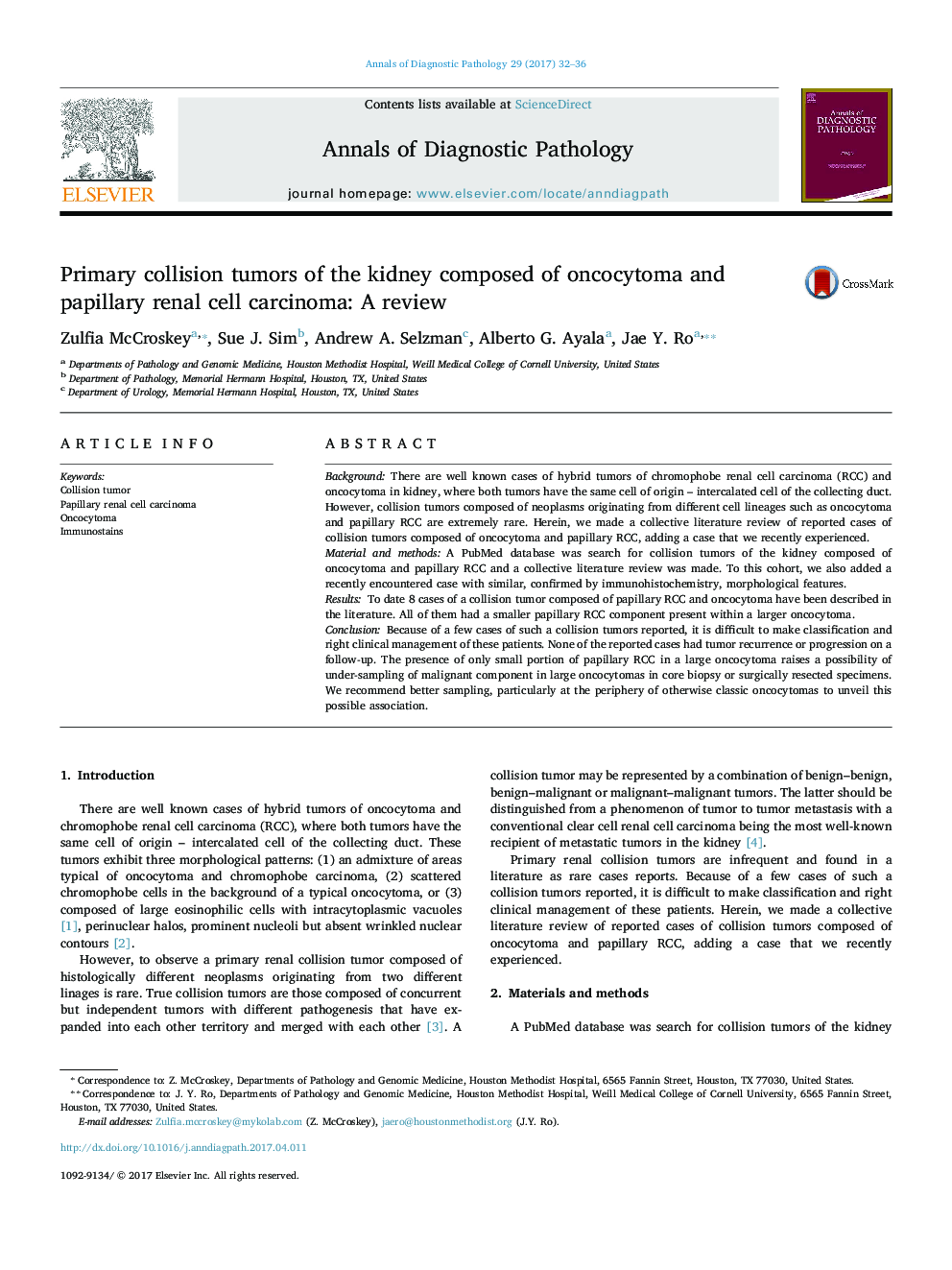| Article ID | Journal | Published Year | Pages | File Type |
|---|---|---|---|---|
| 5715850 | Annals of Diagnostic Pathology | 2017 | 5 Pages |
â¢In hybrid tumors of kidney composed of chromophobe renal cell carcinoma (RCC) and oncocytoma, both tumors have the same cell of origin - intercalated cell of the collecting duct.â¢However, observing collision tumors, tumors composed of cells of different lineages is extremely rare.â¢To date only 8 cases of a collision tumor composed of papillary RCC and oncocytoma have been described in the literature.â¢We made a collective literature review of collision tumors in the kidney composed of oncocytoma and papillary RCC, adding a case that we recently experienced.â¢We recommend generous sampling at the periphery of otherwise classic oncocytomas or papillary growth areas in oncocytomas to unveil this possible association.
BackgroundThere are well known cases of hybrid tumors of chromophobe renal cell carcinoma (RCC) and oncocytoma in kidney, where both tumors have the same cell of origin - intercalated cell of the collecting duct. However, collision tumors composed of neoplasms originating from different cell lineages such as oncocytoma and papillary RCC are extremely rare. Herein, we made a collective literature review of reported cases of collision tumors composed of oncocytoma and papillary RCC, adding a case that we recently experienced.Material and methodsA PubMed database was search for collision tumors of the kidney composed of oncocytoma and papillary RCC and a collective literature review was made. To this cohort, we also added a recently encountered case with similar, confirmed by immunohistochemistry, morphological features.ResultsTo date 8 cases of a collision tumor composed of papillary RCC and oncocytoma have been described in the literature. All of them had a smaller papillary RCC component present within a larger oncocytoma.ConclusionBecause of a few cases of such a collision tumors reported, it is difficult to make classification and right clinical management of these patients. None of the reported cases had tumor recurrence or progression on a follow-up. The presence of only small portion of papillary RCC in a large oncocytoma raises a possibility of under-sampling of malignant component in large oncocytomas in core biopsy or surgically resected specimens. We recommend better sampling, particularly at the periphery of otherwise classic oncocytomas to unveil this possible association.
